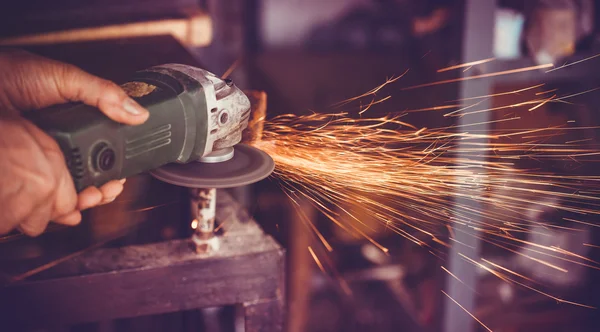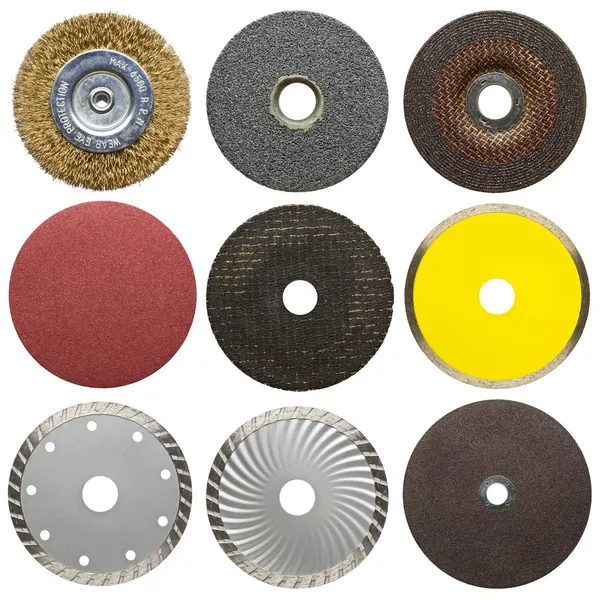Grinding is an essential process in various industries, from metal fabrication to woodworking and masonry. It involves the use of abrasive materials to remove excess material or shape a workpiece to the desired form. One of the primary tools employed for this purpose is the grinding disc, a versatile and powerful tool that can make quick work of rough grinding tasks. However, like any tool, using a grinding disc effectively and safely requires skill and knowledge. In this article, we will explore essential tips for rough grinding with a grinding disc to help you achieve the best results while maintaining safety.
1. Choose the Right Grinding Disc
Selecting the appropriate grinding disc is the first and perhaps most crucial step in the rough grinding process. Different types of grinding discs are available, each designed for specific tasks and materials. Let’s delve deeper into the various types:
Grinding Wheels:
Grinding wheels are the workhorses of rough grinding, and they come in various abrasive materials, bonding agents, and grit sizes. For example, aluminum oxide wheels are suitable for general-purpose grinding of steel, while silicon carbide wheels are better suited for non-ferrous metals, stone, and ceramics. Ceramic alumina wheels are designed for heavy-duty applications and high material removal rates. The choice of abrasive material and grit size depends on the hardness of the workpiece and the desired finish.
Flap Discs:
Flap discs are versatile and ideal for blending, finishing, and polishing tasks, making them suitable for both metal and wood. These discs consist of multiple abrasive flaps arranged radially around a center hub. Flap discs can be categorized by their abrasive material, backing material, and grit size. For example, aluminum oxide flaps with a fiberglass backing are common and available in various grit sizes, allowing for different surface finishes.
Diamond Cup Wheels:
For concrete and stone grinding, diamond cup wheels are indispensable. They come in various types optimized for specific applications. Segmented diamond cup wheels are ideal for heavy material removal and rough grinding of concrete and masonry. Turbo diamond cup wheels have a serrated rim design that provides faster cutting and smoother finishes. Continuous rim diamond cup wheels are used for precise grinding and polishing of stone surfaces.
Wire Brushes:
Wire brushes are versatile tools for cleaning, rust removal, and paint stripping on metal surfaces. These brushes come in multiple wire types, including steel, brass, and stainless steel. Steel wire brushes are ideal for aggressive cleaning, while brass wire brushes are gentler and suitable for polishing softer materials. Stainless steel wire brushes are corrosion-resistant and used for stainless steel and other non-ferrous metals. Wire brushes can have various configurations, such as cup brushes, wheel brushes, and brush discs.
Grinding Cones and Plugs:
These specialized grinding attachments are designed for reaching tight spaces and contours. They come in various shapes and sizes, including cylindrical, conical, and pointed plugs. These are commonly used for deburring, blending, and shaping workpieces with intricate details.
Now that we have a deeper understanding of the types of grinding discs available, let’s move on to essential tips for using them effectively and safely.
2. Wear Proper Safety Gear
Safety should be a top priority when using a grinding disc. Wear appropriate safety gear to protect yourself from potential hazards, including:
- Safety Glasses or Face Shield:These will shield your eyes from sparks, debris, and abrasive particles.
- Hearing Protection: Grinding can be loud, so ear protection is essential to prevent hearing damage.
- Dust Mask or Respirator: Depending on the material you are grinding, you may need protection from airborne dust and particles.
- Gloves: Thick, durable gloves will protect your hands from sparks and abrasive materials.
- Long-sleeved Clothing: Wear clothing that covers your arms and legs to minimize the risk of burns and abrasions.
Maintaining safety gear is non-negotiable; it significantly reduces the risk of accidents and injuries in your workspace.
3. Inspect and Prepare Your Grinding Disc
Before you begin grinding, inspect the grinding disc for any signs of damage or wear. Ensure that it is properly mounted on the grinder spindle and securely fastened. A loose or damaged disc can be extremely dangerous and may cause serious injuries or damage to the workpiece.
Additionally, check the speed rating of the grinding disc and ensure that your grinder operates at the recommended RPM (revolutions per minute) specified by the manufacturer. Using a disc at the wrong speed can result in overheating, disc failure, and accidents.
4. Maintain a Firm Grip and Proper Body Position
Proper body positioning and grip are crucial for maintaining control and stability while grinding. Follow these guidelines:
- Stand with your feet shoulder-width apart for a stable stance.
- Keep a firm grip on the grinder’s handles with both hands.
- Position yourself to the side of the grinder rather than in line with it to avoid the risk of being hit by sparks or debris.
Maintaining a steady and balanced posture will help you control the grinding disc with precision and minimize the risk of accidents.
5. Start with Light Pressure
When you begin grinding, it’s essential to start with light pressure on the workpiece. Applying excessive force can lead to overheating and premature wear of the grinding disc. As you become more familiar with the material and the grinder’s performance, you can gradually increase the pressure to achieve the desired rate of material removal.
6. Use Proper Technique
Grinding requires a steady hand and the right technique to achieve smooth and even results. Here are some key techniques to keep in mind:
- Move the Grinder Side to Side: For flat surfaces, move the grinder in a side-to-side motion, overlapping each pass slightly to ensure even grinding.
- Maintain a Consistent Angle: Maintain a consistent grinding angle to avoid creating gouges or uneven surfaces. This is particularly important when working on beveled or rounded edges.
- Use a Controlled Back-and-Forth Motion: When grinding edges or corners, use a controlled back-and-forth motion to prevent overgrinding in one spot.
- Avoid Overheating:Keep the grinding disc moving to prevent excessive heat buildup, which can cause material to warp or the disc to wear out quickly.
7. Keep the Work Area Clean
Maintaining a clean work area is not only a safety consideration but also crucial for achieving the best results. Grinding generates a significant amount of dust and debris, which can obstruct your view and create a hazardous environment. Use a dust collection system or wear a dust mask to minimize airborne particles. Additionally, regularly clean the work area to prevent tripping hazards and to maintain a clear line of sight.
8. Cool Down as Needed
During prolonged grinding sessions, it’s important to allow the workpiece and grinding disc to cool down periodically. Overheating can lead to disc wear and damage. To cool the workpiece, simply stop grinding for a few moments while maintaining the grinder’s position. This short break can help prevent heat-related issues.
9. Check Your Progress Frequently
Regularly inspect the workpiece to evaluate your progress and ensure that you are achieving the desired results. This will help you make any necessary adjustments in terms of pressure, angle, or technique to achieve a consistent finish.
10. Practice Patience
Rough grinding can be a time-consuming process, especially when dealing with tough materials. It’s important to exercise patience and avoid rushing through the job. Applying excessive pressure or working too quickly can lead to mistakes, overheating, and excessive wear on the grinding disc. Take your time to achieve the best results safely and effectively.
11. Maintain and Store Your Equipment
After completing your grinding tasks, make sure to properly clean your equipment, including the grinding disc and grinder. Store them in a dry and secure location to prevent damage and maintain their longevity. Regular maintenance, such as lubricating moving parts and inspecting the grinder for wear, is essential to ensure safe and efficient operation.
Conclusion
In conclusion, rough grinding with a grinding disc is a versatile and powerful process that can help you shape and finish various materials. However, it’s important to prioritize safety by wearing the appropriate protective gear, choosing the right grinding disc, and following proper techniques. By following these tips and practicing caution, you can achieve excellent results while minimizing the risk of accidents or injuries in your grinding projects. Remember that practice and experience will enhance your skills over time, making you a more proficient and efficient grinder.


